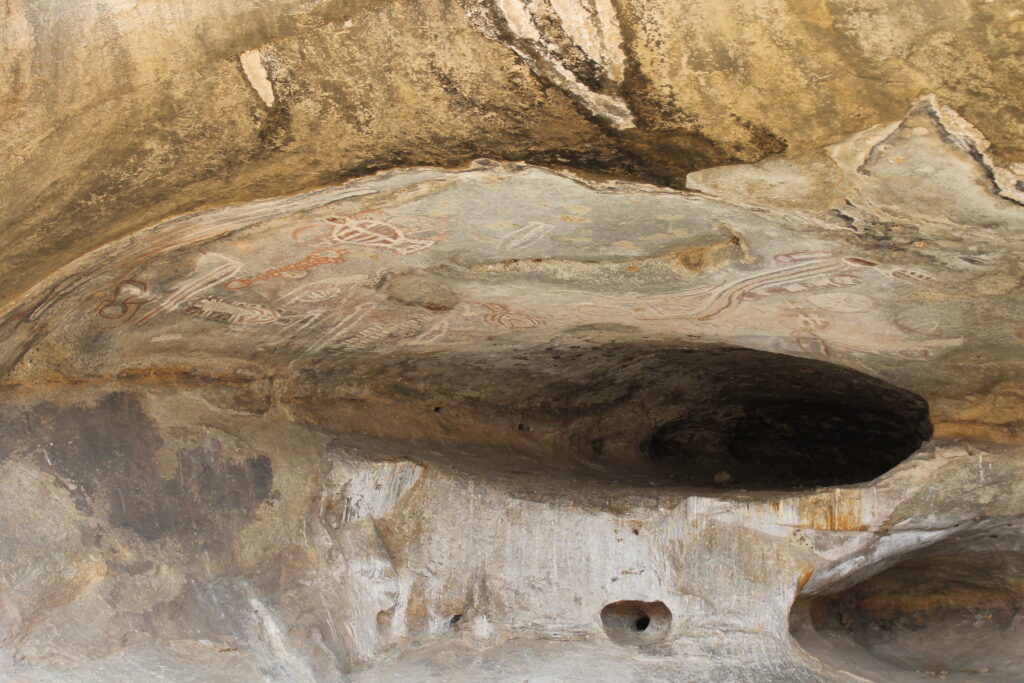The Tchitundu-Hulu Rock Paintings – A Glimpse into the Ancient History of Angola
The Tchitundu-Hulu rock paintings in Angola offer a unique glimpse into the country’s ancient history. They are an important archaeological site, featuring more than 500 paintings, mostly depicting birds, fish, and crocodiles, as well as human figures. The paintings are estimated to be at least 600 years old, and they provide a fascinating insight into the beliefs and daily life of the people who lived there long ago.
Where Can You Find the Tchitundu-Hulu Rock Paintings?
The Tchitundu-Hulu rock paintings are located in the Huíla Province of Angola, in the municipality of Dombondola. The paintings are found on the walls of several large rocks, which are located 1 km away from the village of Tchitundu-Hulu. The paintings can be accessed by foot from the village, or by car from the nearby town of Quilengues.
Historical Significance of the Tchitundu-Hulu Rock Paintings
The Tchitundu-Hulu rock paintings provide an important glimpse into the history of Angola. The paintings are believed to date back to the 15th century, when the area was inhabited by the Ovimbundu people. The paintings are thought to be the work of the Ovimbundu shamans, who used them to tell stories and communicate with their gods and ancestors.
The Tchitundu-Hulu rock paintings are also important for their cultural significance. The paintings depict a variety of animals, including birds, fish, and crocodiles, as well as human figures. These figures are believed to represent ancestors, gods, or spirits. The paintings are believed to have been used in spiritual rituals and ceremonies, and they offer an insight into the beliefs and practices of the Ovimbundu people.
What Are the Different Styles of the Tchitundu-Hulu Rock Paintings?
The Tchitundu-Hulu rock paintings are divided into three distinct styles: geometric, naturalistic, and schematic. The geometric style features bold, abstract shapes and patterns, while the naturalistic style features more realistic depictions of animals and people. The schematic style is the most common, and it features simplified figures and shapes.
The paintings are mostly made in red, yellow, and black pigments, which were created from natural materials such as clay, charcoal, and ochre.
Preservation of the Tchitundu-Hulu Rock Paintings
The Tchitundu-Hulu rock paintings are an important part of Angola’s cultural heritage, and they are a valuable source of information about the country’s past. The Angolan government has taken steps to protect the paintings, which includes the installation of a fence around the site.
In addition, the government has launched an awareness campaign to educate people about the importance of the paintings and to discourage vandalism. The campaign has been successful, and the paintings have been well-preserved for future generations.
Visiting the Tchitundu-Hulu Rock Paintings
The Tchitundu-Hulu rock paintings are a fascinating glimpse into Angola’s ancient history, and they are an important part of the country’s cultural heritage. The paintings are open to the public, and visitors can access the site by foot from the village of Tchitundu-Hulu, or by car from the nearby town of Quilengues. When visiting the Tchitundu-Hulu rock paintings, it’s important to respect the site and follow any rules or guidelines provided by local authorities. This includes refraining from touching or damaging the paintings, as well as disposing of any litter responsibly.
Guided tours are often available, providing visitors with valuable insights into the history and significance of the paintings. Additionally, visitors should be prepared for outdoor conditions, including potential hot weather and rough terrain.
Overall, a visit to the Tchitundu-Hulu rock paintings is a unique and enriching experience, offering a glimpse into the ancient history and cultural heritage of Angola. It’s an opportunity to connect with the past and gain a deeper understanding of the people who once inhabited this fascinating region.

